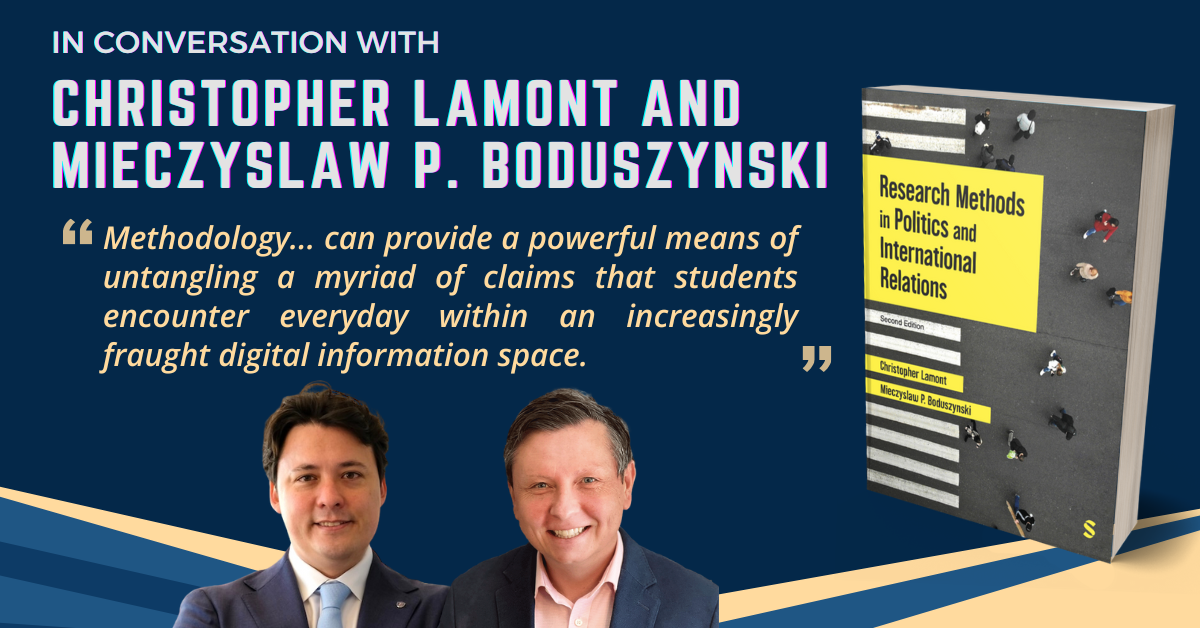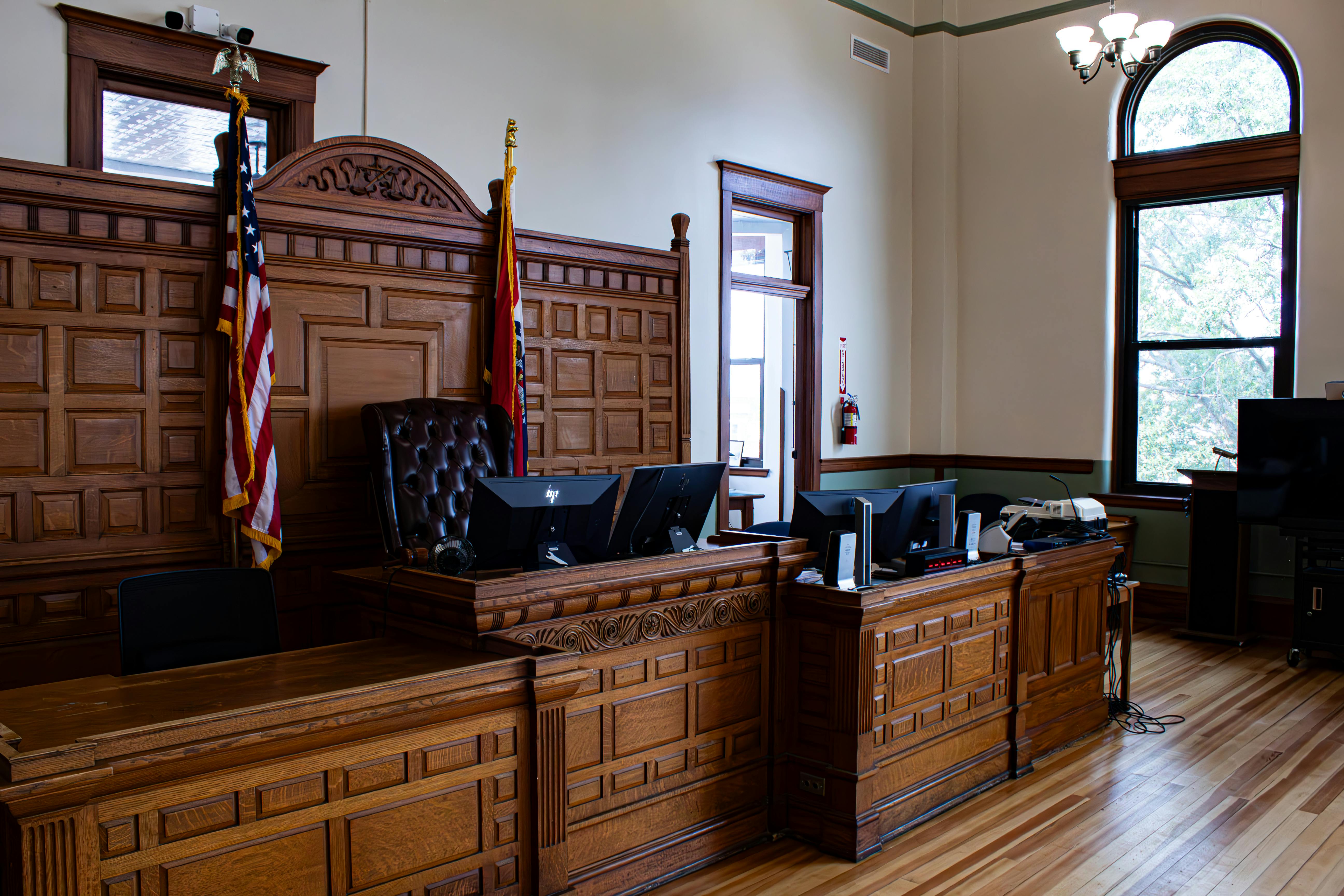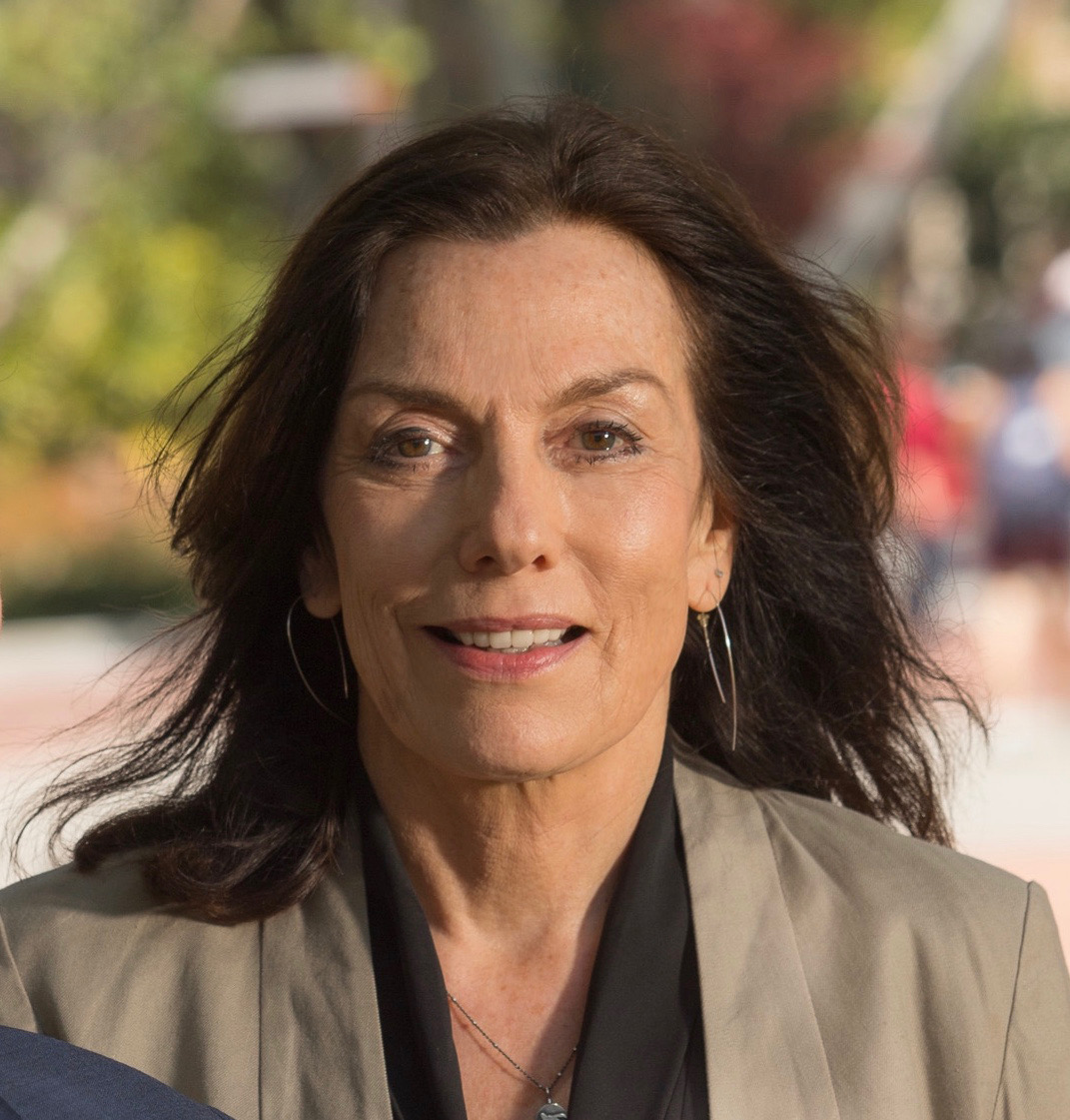
What happens when a seasoned diplomat and a globally engaged scholar join forces to rethink how we teach research methods in politics and international relations? You get a textbook that is not only practical and comprehensive but also deeply informed by real-world experience. In this interview, Professor Christopher Lamont and Associate Professor Mieczyslaw (Mietek) Boduszynski discuss their motivations behind the second edition of Research Methods in Politics and International Relations. With rich academic backgrounds—and a shared Fulbright stint in Croatia—they’ve designed a resource to help students move beyond formulaic thinking and connect theory, methods, and real-world relevance. Whether it’s climate change, great power competition, or democratization, their book equips students to ask sharper questions and design stronger research, bridging classroom learning with global challenges. Without further ado, let's dive in!
Can you tell us about yourself and your background?
Lamont: I am a Professor of International Relations at Tokyo International University in Japan. Prior to my current position, I have held academic appointments in the Netherlands and the United Kingdom. I was also previously a Fulbright scholar in Croatia. I have taught research methods at the undergraduate and graduate levels for more than fifteen years and have also supervised numerous MA and PhD theses. In addition to this, I am also working with the Global Governance Institute in Brussels on topics relating to the governance of emerging technologies.
Boduszynski: I am Associate Professor of Politics and International Relations at Pomona College in California. I have also worked extensively as a practitioner of international relations: as a U.S. diplomat, policymaker at the U.S. Department of Defense, and foreign policy advisor in the U.S. Congress. I was also once a Fulbright scholar in Croatia, which is how Chris and I originally met!
What motivated you to write Research Methods in Politics and International Relations, and what gaps were you aiming to address in existing literature?
Lamont: This book, much like my other methods texts, Research Methods in International Relations, was the result of challenges I faced in teaching research methods to diverse cohorts of students. One particular challenge was finding accessible methods texts that were written with novice researchers in mind. That’s why I thought it was important to write a textbook that offers students a single resource with a broad, but also in-depth, introduction to methodology and methods.
Boduszynski: Like Chris, I was motivated by my excellent students and their request for an all-in-one, accessible resource to guide them through the research process. At Pomona College, teaching and mentoring are the center of what we do. And supervising IR theses is always a major part of my academic year. I undertook this project with Chris in the hopes that my thesis students—and their counterparts around the world—will find in its pages much practical advice on how to turn their interests and passions into works of social science!
How did your diverse academic and professional backgrounds shape the content and structure of this new edition?
Lamont: In addition to writing this textbook, I enjoy carrying out my own research and following the latest scholarship on topics of interest. Much of the scholarship that I read and find impactful can be found as examples in the text. Indeed, it was my own personal interest in transitional justice and post-conflict accountability that underlined for me the importance of scholarship not just to the fields that we study but also the wider world.
Boduszynski: I try to bring the real world into the classroom. I hope that students who reach for this textbook will find that real world within it, whether in the policy-informed research examples or in the advice we offer students on how to amplify their research findings for a broad community of scholars and policymakers.
This second edition includes new chapters and expanded practical features. What were the most important updates, and why were they necessary now?
Lamont: The second edition introduces significant changes in how we present methodology, theory, and research design. This includes a new dedicated chapter on theory and more guidance on methods introduced in the first edition, including discourse analysis, interviews, descriptive and inferential statistics. Another update addresses fast-paced developments in technology like large language models (LLMs).
Boduszynski: I hope that the “research in practice” section at the end of each chapter proves useful to students. There, we show how the concepts introduced in that chapter can be applied to research questions that are at once highly relevant to the disciplines of politics and IR and the real world.
The book gives significant attention to both theory and method. How do you encourage students to effectively bridge theoretical frameworks with empirical research?
Lamont: Theory and method are perhaps two of the most misunderstood concepts on the part of novice researchers. This is not because these concepts are intrinsically difficult to understand, but rather because often their meanings are assumed to be familiar to the reader in scholarship. As such, there is a mystification of theory and method that often produces a sense of uneasiness on the part of students. This is entirely unnecessary, and we hope it can be addressed through our new chapter on theory, but also chapters on research design, the case study method, and the comparative method.
Boduszynski: It’s not always easy to teach theory to undergraduates. However, as we note in the textbook, even leaders who may not be aware of theory are making certain theoretical assumptions when they make decisions. This is something I try to emphasize in my classes. And as we also highlight in the textbook, social science without theory is mere description.
You have included case examples on topics like climate change and great power competition. How do these real-world issues help students grasp methodological approaches more concretely?
Lamont: By showing students how research methodologies help us to better understand real-world issues and challenges, it is hoped that students will see methodology as something that is not abstract and detached from real-world concerns, but rather can provide a powerful means of untangling a myriad of claims that students encounter everyday within an increasingly fraught digital information space.
Boduszynski: Using real-world issues allows students to connect what they are hearing about in the media every day to academic research. Politics and IR provide a diverse array of tools with which to interpret big trends like renewed great power competition, but also important events such as the conflict in the Middle East.
What are some common challenges students face when undertaking political or international relations research, and how does your book help guide them through those hurdles?
Lamont: One common challenge I observed is that longer student research papers such as BA or MA theses, sometimes read like disjunctured research papers, with core components such as research design and literature reviews feeling very formulaic and disjointed, and a parallel lack of sustained application of theoretical or analytical frameworks in the actual analysis. Our textbook addresses each step of the research project in a single cohesive text to illustrate how all these steps are interrelated so that students learn how to write more integrated and cogently written research papers.
Boduszynski: My undergraduate students have no shortage of ideas and interests. The challenge is translating those ideas and interests into clear research questions and designs. Honestly, one common challenge is simply limiting the scope of a research question and topic to make it feasible. We hope our textbook helps students address each of these challenges!
Find out more about *Research Methods in Politics and International Relations 2nd Edition by Christopher Lamont and Mieczyslaw P. Boduszynski*

In Conversation with Marc Baaij
In Conversation with Michael D Myers
In Conversation with Gjoko Muratovski
In Conversation with Emily Öhman
In Conversation with Christopher Such
In Conversation with Andrei Lux
In Conversation with David Deakins and Jonathan M. Scott
In Conversation with Michael Beverland and Pınar Cankurtaran
In Conversation with Annmarie Hanlon
In Conversation with S Alexander Haslam, Craig McGarty, Tegan Cruwys & Niklas K. Steffens
In Conversation with James Abdey









